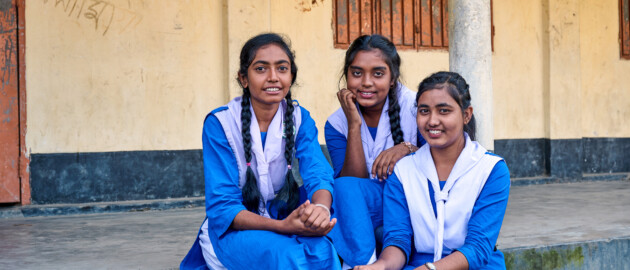Social Protection Program for Adolescent Nutrition (SOPRAN) for improving…
This project will leverage Pakistan’s leading social safety net initiative to enhance the nutritional status of the population by improving local norms and practices

Ensuring adolescents have the nutrition they need to reach their full potential.
We deliver proven nutrition interventions, provide nutrition education, and integrate nutrition into new platforms to improve the wellbeing of adolescents, particularly girls.
Adolescence provides a critical window to improve nutrition, growth and development.
When it comes to preventing malnutrition’s irreversible effects, timing is crucial. Adolescents grow and develop at a rate that is surpassed only by the staggering growth rate of a newborn.
It’s virtually impossible to overstate the role good nutrition plays in the adolescent stage of life. Adolescents are adding height, muscle and bone mass, while nearly every system and organ in the body matures. For adolescent girls, menarche (onset of menstruation) also increases nutritional needs for iron and other micronutrients related to growing bone and muscle mass, including calcium, zinc and vitamin D.
Good nutrition can fuel optimal physical and mental growth, giving adolescents the strength and focus to study, work, ward off illness and disease, and fully participate in their communities.
Despite having increased nutritional needs during adolescence, girls often face the most barriers to accessing the nutrition they need. An estimated 30% of adolescents worldwide are anaemic, and approximately half of those anaemia cases are due to iron deficiency. Malnutrition, along with social and cultural factors, contributes to 130 million girls being out of school. Even when girls are in school, anaemia can hold them back from academic achievement and potential future economic empowerment.
Ensuring adolescents have the nutrition and knowledge they need to thrive.
Nutrition International aims to reduce anaemia in adolescent girls through weekly iron and folic acid supplementation (WIFAS) and help them feel empowered through nutrition counselling and education. Boys also receive nutrition education, and in contexts where anaemia rates for boys are high, may receive supplements as well.
We support ministries of health and education, and work in collaboration with local partners, to:
Forging new and innovative partnerships to raise the profile of adolescent nutrition at the global level.
In collaboration with global partners, we are:
Our Program Gender Strategy
Including sex and gender-based analysis for all adolescent programs.
In accordance with our Program Gender Strategy, all adolescent nutrition programs will include sex and gender-based analysis to make sure that we have identified gender barriers to nutrition, and that the development and implementation of our programs are gender responsive.
Integrating approaches alongside nutrition-sensitive areas to increase impact and sustainability.
Examples of integrating approaches include:
Discover our projects around the world
See a list of Nutrition International projects that are helping adolescents reach their full potential through better nutrition.